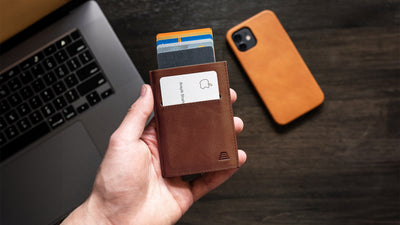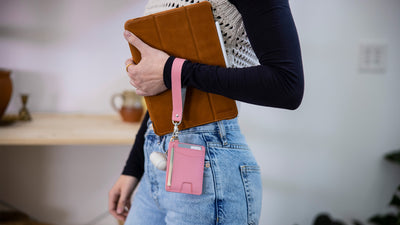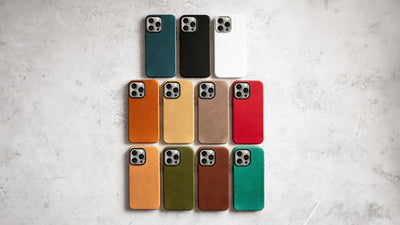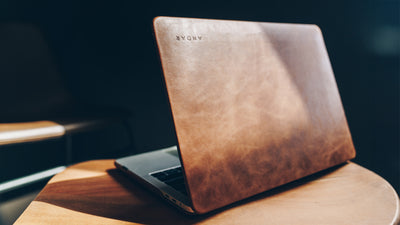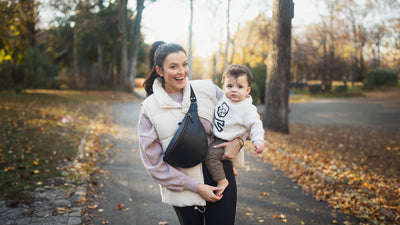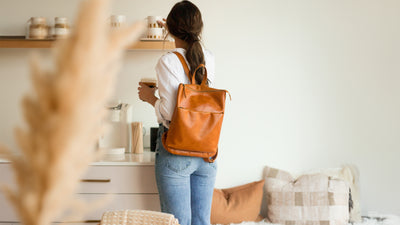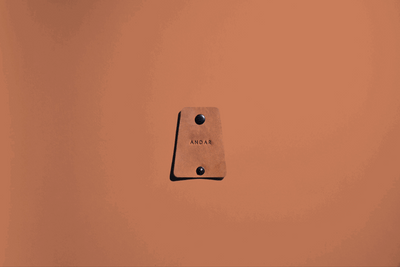The Blog
How To Weatherproof Leather This Winter
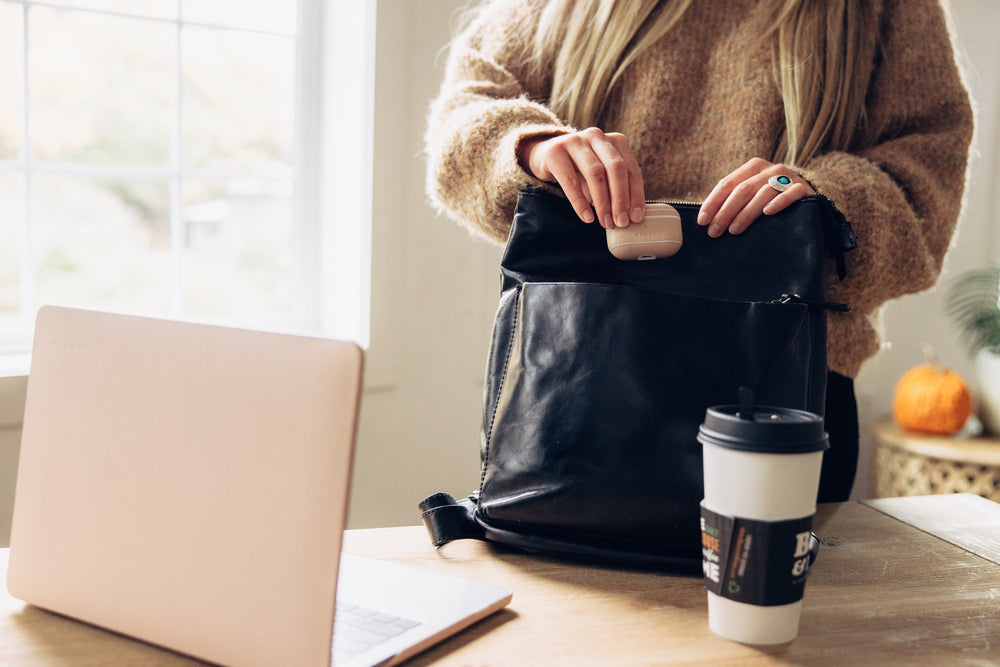
Whether winter brings icy roads, snowstorms, or extra rainfall, there’s no season more important for weatherproofing your leather. Not only are we more likely to whip out our leather products during this time, but the weather conditions of winter make it more likely to cause water damage to your favorite leather products.
To help you avoid this, it’s important to weatherproof your leather. We are here to help you understand why it’s important, which materials help you accomplish this, and what the process for weatherproofing is.
Here’s a complete guide from us on weatherproofing your leather this winter:
The Characteristics of Leather
Leather has been produced worldwide for millennia and remains one of the most popular materials for shoes, bags, and accessories. But some of its characteristics make taking care of leather a must.
Here are some of the reasons why it’s such a special material:
- Appearance: There are no two identical leather products. Leather is a natural material with unique variations in grain, color, texture, marks, and blemishes. All of these add a unique imprint of the individual hide and add personality to your leather goods.
- Longevity: Leather is an incredibly resilient material, outlasting any other fabrics. It won’t rip or crack (unless your leather bag comes in unfortunate contact with a piece of metal or something along those lines). With age, your leather won’t fade but develop a patina, giving it a darker and smoother look.
- Durability: The only way your leather will stretch out is if you wear it often. In these cases, it will conform to the size and shape of your body. Otherwise, leather is a very durable material that will preserve its characteristics for ages.
- Porosity: Full-grain leather (the highest quality of leather) is a natural material. So, it makes sense for it to have pores. On the bright side, this makes it an incredibly breathable material. On the downside… Well, check out the rest of our guide on how to care for your leather goods the right way to find out.
Is It Weatherproof or Waterproof?
When we say waterproof, we mean that no water gets in and no water gets out. This is a nice quality for metal objects (like your car) to have, but full-grain leather is a little different than that. Because of its natural porosity, it will never be 100% waterproof.
Instead, we want it to be weatherproof, which means that the leather is water-repellent. This will protect it from moisture while keeping it a breathable material.
Why Do I Need to Weatherproof Leather?
We might have mentioned this before: Leather is a porous material. This means that water can get in, and when it does, the natural oil that leather contains starts to bind to the water molecules.
Eventually, the water molecules will begin to evaporate, and they will take those oil molecules right along with them, leaving the once-smooth leather dry and cracked. This can do some serious damage to the look and feel of your leather goods.
For this reason, you have to make sure that your leather is covered with a finish that makes it resistant to water. This means that if you accidentally spill some liquid on your leather accessories, the liquid will turn into droplets on top of the leather, which you can quickly wipe away.
Of course, this won’t work if you submerge your leather in water, but for those real-life situations, weatherproofing your accessories can make them last you for ages.
Top Weatherproofing Materials
Hopefully, you see the importance of weatherproofing your leather goods and accessories. Now we can get down to the next steps: the best ways to waterproof your leather.
Before we get into how, let’s look at the what. In other words, what are the best ingredients for weatherproofing leather?
Here are our top picks:
Beeswax
Although most noted for its use in making candles and cosmetics, beeswax makes an excellent material for weatherproofing leather. It’s 100% natural and is considered a food-grade wax.
Plus, it contains at least 280 different compounds. It has a pretty high melting point, which means that you’ll need to heat it up—preferably in a hot water bath—before applying it to leather.
Vegetable and Seed Oil
This is one household ingredient that should be available to almost everyone with a kitchen. You could use soybean, canola, olive, or whichever oil you might have on hand (being careful to avoid anything infused with garlic or onion).
Because they’re liquid at room temperature, oils don’t need to be warmed up or melted before use.
Soap
If you ever learned about the ancient soap-making process, you’ll remember that tallow—an animal fat—was an essential ingredient. These days, not much has changed. Indeed, soap is still made by mixing fats and oils.
And when mixed with other household ingredients, a dissolved bar of soap can make for a pretty decent weatherproofing soak for leather goods and accessories.
Lanolin
This is an oily substance derived from sheep’s wool. If this being eco-friendly is important to you, lanolin is natural and sustainable. Plus, it’s pretty simple to use, requiring no preparation beforehand.
Petroleum Jelly
Petroleum jelly is a mixture of mineral oils and waxes which takes on a jelly-like consistency. Although definitely not our top pick, it is a very economical option for weatherproofing lather. Plus, we’re betting that, unlike beeswax, you’re more likely to have a jar of it on hand.
Andar’s Leather Cream
We definitely think that these are all great ingredients that you might already have at home. But in the case that you prefer a professional product made just for the purpose of weatherproofing leather, we got your back.
Using a blend of natural ingredients and packaged in a ready-to-use container, our leather cream won’t send you rummaging through your cupboards to care for your leather.
Steps for Weatherproofing Leather
Now that we have a pretty good idea of which ingredients are best for taking care of your leather, let’s look at what the weatherproofing process entails.
Of course, the steps will vary depending on which ingredients you use. To keep things simple, let’s take a look at how this process works with our favorite ingredients: beeswax combined with mineral oils.
- Step 1: Clean the Leather: Don’t go overboard here, as the weatherproofing process can actually be a cleansing one. But do grab a damp cloth and wipe off any visible dirt, mud, or dust before you apply the cream.
- Step 2: Apply Cream to the Leather: Since you’re using a ready-made cream, there’s no need to tinker with the ingredients. Indeed, it’s ready to be applied as is. So, grab a piece of cloth and apply a generous amount of the cream to your leather product.
- Step 3: Leave It Alone: Let the cream soak in for about 15 minutes. The science isn’t exact here, but if you leave it on for too long (we’re talking overnight), then your leather might take on a tallowy appearance. While it’s not permanent, it’s still something we’d try to avoid.
- Step 4: Clean Off the Surface: Using a clean cloth, rub out any excess cream that remains on the surface until the leather feels smooth to the touch.
- Step 5: Enjoy Your Brand-New Leather: Maybe this goes without saying, but your leather should look dramatically different now. Enjoy it and spread the word about proper leather care.
Other Ways To Protect Your Leather
To make sure your leather looks and feels great for ages, there are a few more things you can do to take care of it.
Weatherproofing is by far the most important, but here are a few other tips for caring for your leather.
- Don’t Overstretch It: Leather can stretch out if you don’t respect its shape. So, if you’re guilty of carrying your life around in your wallet, take some time to declutter.
- Clean it Gently: There’s no need to scrub leather if it gets dirty. When you notice dust or spots on your leather, take a damp cloth and gently wipe it off to avoid leaving any scratches on it.
- Don’t Get It Wet: Remember, you can’t completely waterproof your leather. If rain is in the weather forecast, grab an umbrella before you leave home.
- Avoid Scratches: Leather is pretty durable but not bulletproof. Take care not to scratch it with rough surfaces and sharp accessories.
- Repair Scratches: We may try our best but scratches happen to the best of us. If you notice that your leather has been scratched up, don’t despair and follow our easy guide to repairing scratches.
Make Your Leather Last
While leather will never be 100% waterproof, there’s a lot you can do to protect it from water damage. With the right leather cream—and maybe even a ritual to go along with it—you’ll be well on your way to keeping your leather in top shape for years to come.
Our Sources:
Beeswax - An Overview | Science Direct
Lanolin - An Overview | Science Direct
Champagne, Vivaldi and Cleaning Your Shoes | The Wall Street Journal